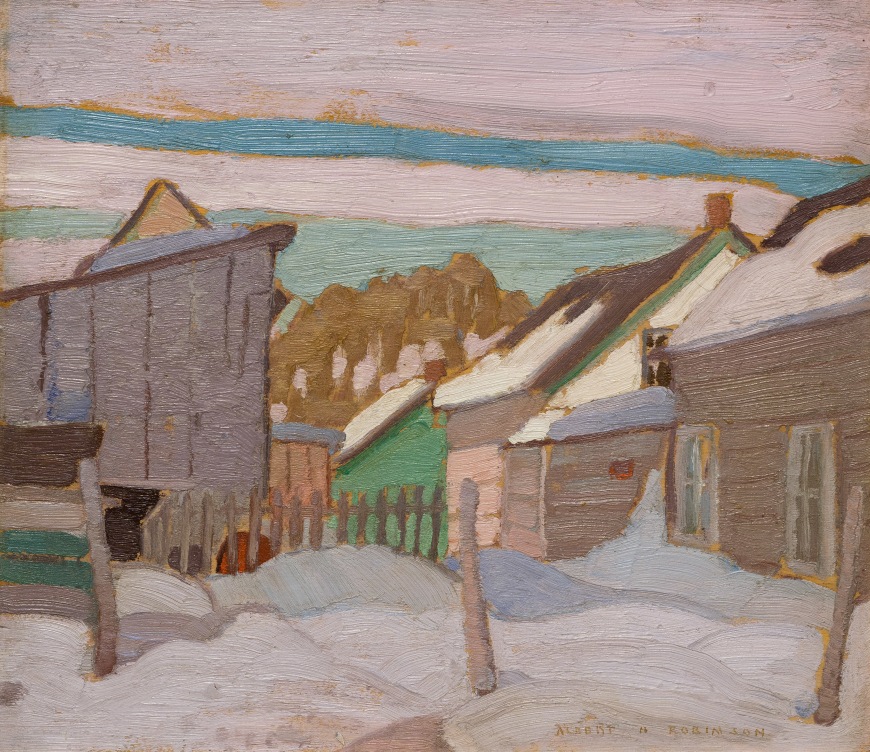-
Artworks
Albert H. RobinsonLa Malbaie, 1927 (circa)1881-1956Oil on panel11 x 13 inThis painting is presently on view at our Toronto gallery
27.9 x 33 cm$25,000Inscriptions
signed, ‘ALBERT H. ROBINSON’ (lower right); titled, ‘La Malbaie’ (verso)Provenance
Walter Klinkhoff Gallery, Montreal
Private collection, Ottawa
By descent to the present private collection, Barrie, Ontario
Albert Robinson was one of the finest artists among the now famous group that was developing a Canadian school of painting in the years surrounding World War I. Robinson was held in high esteem by his peers. He had been invited to join the Group of Seven. Robinson confided to Walter Klinkhoff that he, “simply could not share the philosophy of the others [in the Group]” and that he, “did not feel compelled to paint the remote wilderness of Canada, but preferred those inhabited places, particularly the Lower Saint-Lawrence region." La Malbaie (Murray Bay), Baie-Saint-Paul, Saint-Fidèle, Bienville, Saint-Joseph and Cacouna are some of the villages where he went to find his best compositions in winter.
Nevertheless, Robinson was a participant in the first Group of Seven exhibition in May of 1920, and the Group’s Arthur Lismer described him as “a colourist of the first order.” Robinson was one of the, “modern artists from Montreal closely affiliated with the [Beaver Hall Group].” His work was selected for its inclusion in the landmark British Empire Exhibition at Wembley in 1924, “where the modern artists stole the show” [1]. In Paris in 1927, “... The Open Stream was acquired by the French government [2]”. By that time, according to Jennifer Watson,“ [Robinson]had already gained considerable recognition through Canadian galleries’ purchases”[3]. In 1926, Robinson exhibited at the Sesquicentennial International Exposition in Philadelphia, winning the Bronze medal; two years later, his painting Sunny Day, La Malbaie won the Jessie Dow prize at the Art Association of Montreal’s Annual Spring Exhibition. Further shows in Atlantic City, Buenos Aires, Buffalo, Pittsburgh and Saint-Louis, not to mention important Canadian shows, confirmed Robinson’s reputation. He was, likewise, a founding member of the Canadian Group of Painters which developed from the Group of Seven. But it seemingly was in 1933, after just thirteen years, that Robinson’s career ended abruptly: he suffered a heart attack with ensuing complications [4].
This is an important opportunity to purchase a particularly fine composition by the master.
______________________
Footnotes:
[1] Jacques Des Rochers and Brian Foss, et al., 1920s Modernism in Montreal: The Beaver Hall Group (Montreal: Montreal Museum of Fine Arts, 2015), 90.
[2] Ibid.
[3] Jennifer Watson, Albert H. Robinson: The Mature Years (Kitchener: Waterloo Art Gallery, 1982), 19.
[4] Ibid.
1of 4













